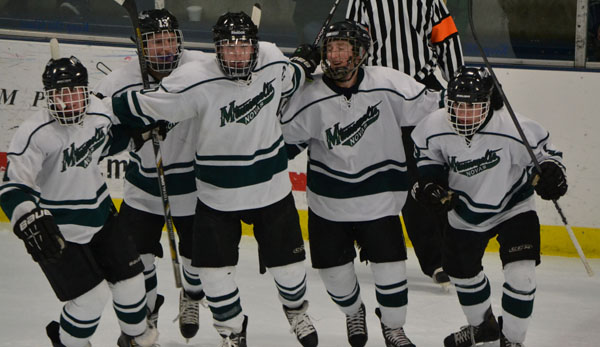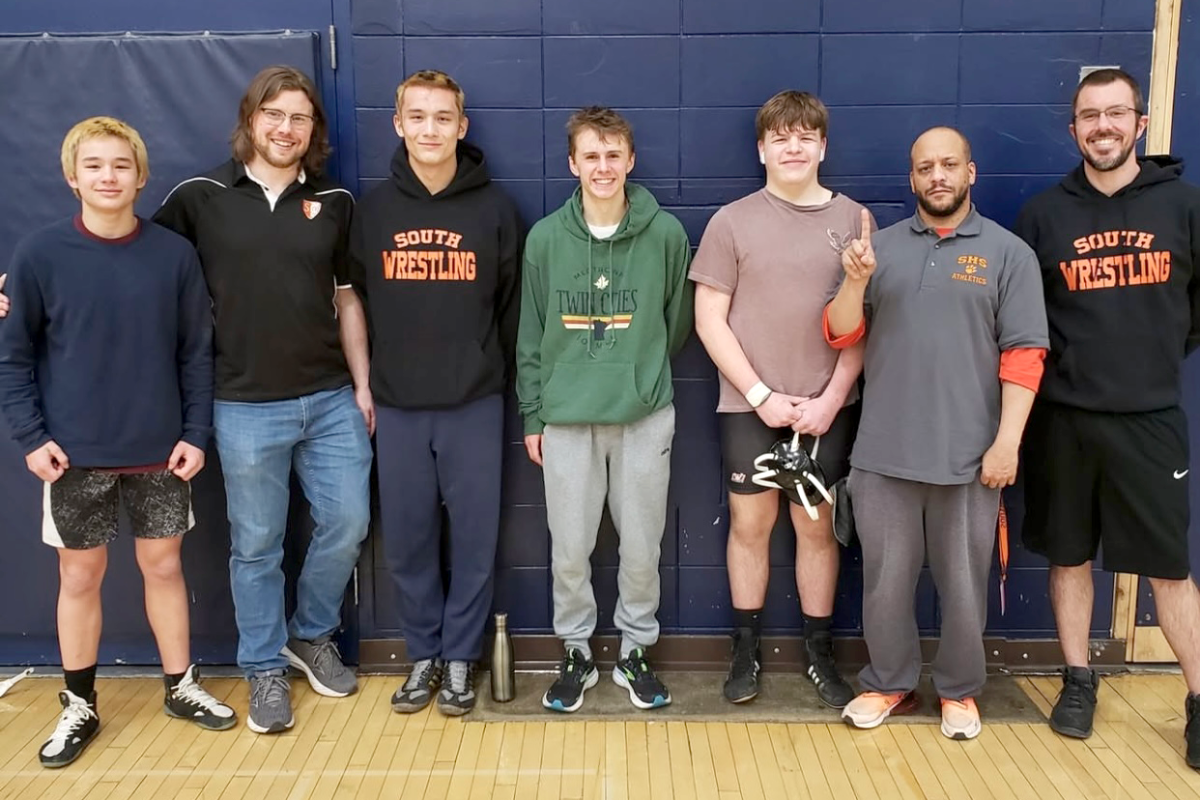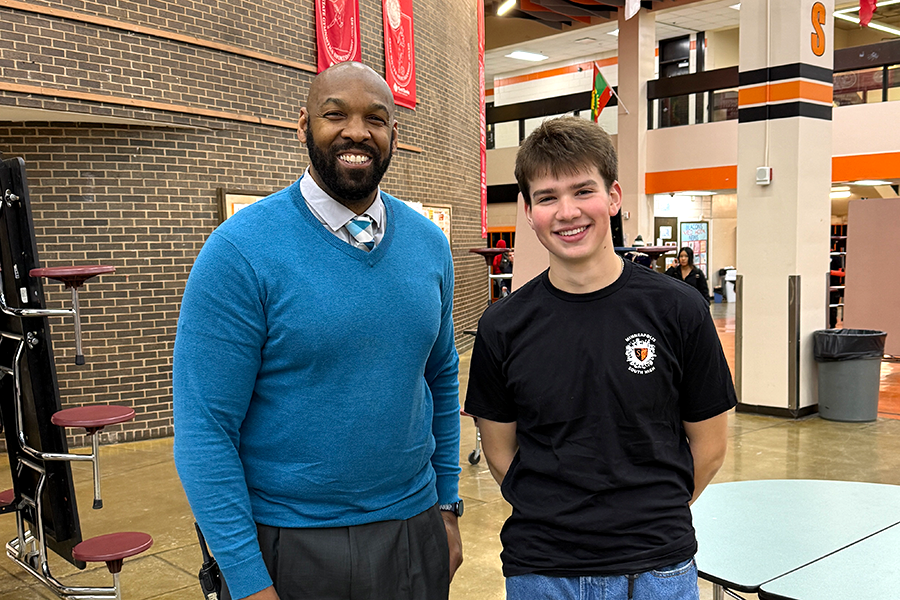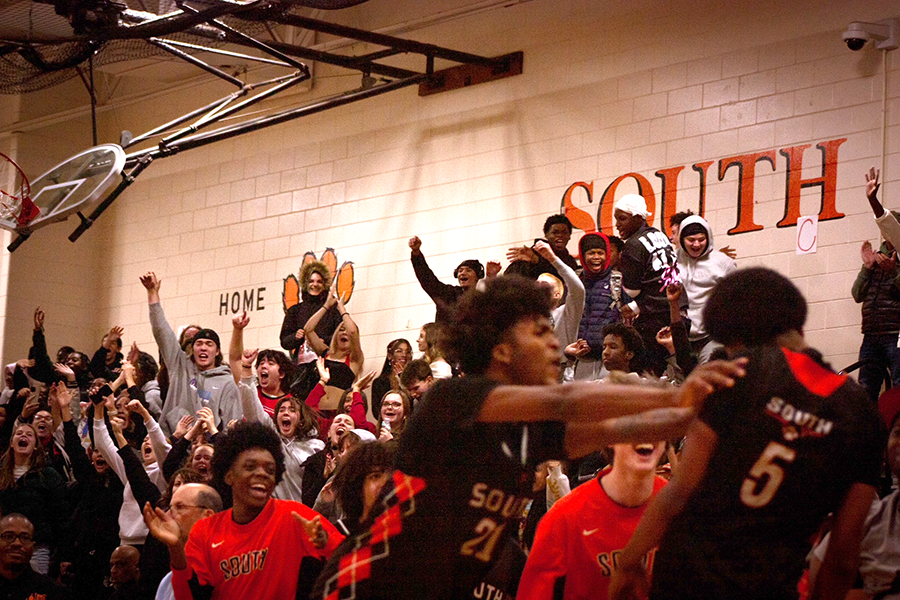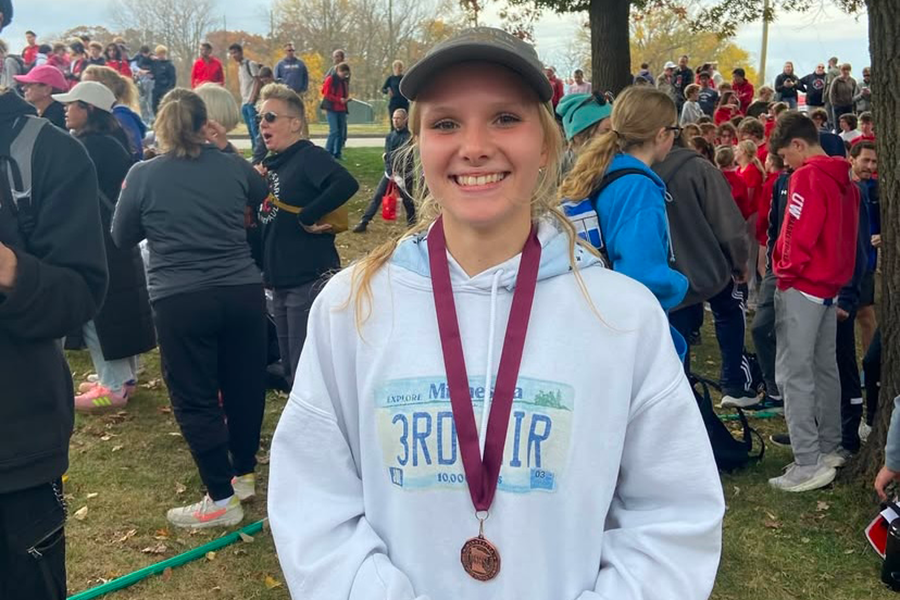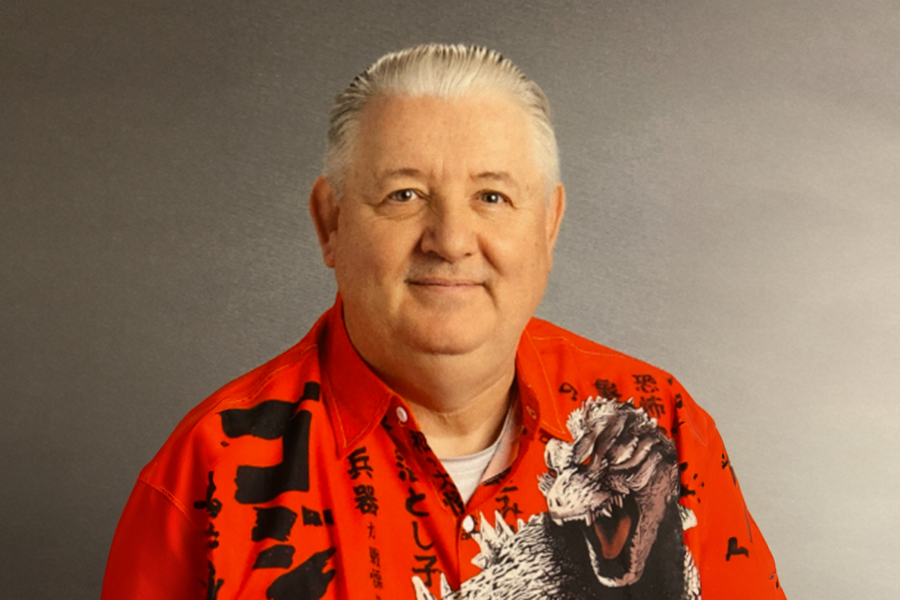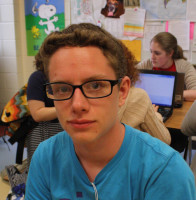The referee’s bandaged hand catches the puck as it comes flying toward the glass wall, protecting the spectators from the player’s slap shots but not blocking their impassioned behavior. The loud ‘errr’ of the timer blares and the players race to their team’s box. It’s only the second break and there’s twenty minutes left in the game but looking at the scoreboard, the Novas know they’ve already won.
The team makes this win look easy, but these kinds of victories are years in the making.
“The tough thing about hockey is it takes you ten years to learn how to play. You can’t just take a normal kid who’s never played and have them play hockey, they have to come to high school knowing how to play,” said Joe Dziedzic, the Novas head coach.
Minneapolis high school hockey has changed drastically over the years. At one point, there were eleven teams, and now all seven public high schools are consolidated into one hockey team, the Minneapolis Novas. Combining separate schools into one team, while it may be necessary to continue high school hockey, is not an easy transition, especially when these schools, which for the rest of the year are in a clash of school pride, do not always get along. “[The combination] takes away the pride of your school. You’re rooting against someone for football and basketball and then for hockey you’re like ‘hey,’” said Dziedzic.
There’s nothing like cheering for your school at a football game or track meet, displaying your school colors with pride as you cheer your classmates on. At a Novas game, however, the bleachers are sparsely occupied by a few students, standing among their friends and as far away from the other schools on the team as possible. And when a player scores, fans don’t cheer for the entire team but rather for individual players they know.
“A few come out, usually girlfriends, parents, a couple of buddies. But generally I think there is a lack of attendance of fans,” Dziedzic said.
According to Novas junior varsity head coach John Bergford, the transition has been relatively easy. “I mean, the first big transition was to merge the two teams, East and West,” said Bergford. Four years ago, there were two Minneapolis high school hockey teams: East and West. East was comprised of players from South, Roosevelt and Edison while West was made up of players from Henry, Southwest, Washburn and North.
In April of 2009, the Minnesota State High School League merged the Minneapolis East and West boys hockey teams because of the diminishing number of players. And for the past three years the Novas have exploded, winning games left and right, and last year became the first inner-city team to win a Schwan Cup boys title.
“In the first season of the Novas, the kids knew each other from park board teams and had been separated in high school so there was really no problem with kids from different high schools playing together,” said Bergford.
“The new coaching staff has been a lot of help, they provide more for the team,” Josh Huisken, South senior and Novas player, said. “[Combining the teams has] been really good. It’s increased our skill level, making the competition harder.”
But now the same problem of lack of players seems to have emerged again.
“We’ve had a lot less people coming and trying out,” said sophomore and Novas player Kyle Helmstetter. “A lot of kids come to our youth program and then leave and go to the suburban schools.” Students choosing suburban schools over city ones because of sports is nothing new. Most suburban hockey teams are either one or two schools combined while the Novas is seven, and the reason for this might simply come down to money.
“Suburban schools getting more money [is] one of the challenges of trying to upgrade our facilities and upgrade our equipment, jerseys, etcetera,” Dziedzic said. “Most high schools provide a certain amount of equipment and what do we get, jerseys? That’s it.”
Hockey is an expensive sport, with ice skates costing anywhere from $100 to $800. Hockey pants, pads, helmets and gloves to play high school hockey is an investment, especially when all the team provides is the jerseys. Because of this when students are looking at high schools with hockey in mind they tend to look toward the suburban schools, which provide all of the needed equipment.
“It’s really expensive,” said Huisken. “This year I’ve spent over $1,000 on gear alone.”
“Part of [the lack of players] is demographics of the school, the demographics of the city, especially South where kids of minority typically don’t play hockey,” Dziezic said. “It’s expensive and it’s not really in their culture.”
So whether it’s money or demographics or a combination of the both, the Novas, even after combining all seven high schools, still seem to be losing kids to suburban schools. But there is still hope for expansion.
“In the future I anticipate we’ll have more players come out,” said Bergford. “We have a lot of parks hockey players coming.”

